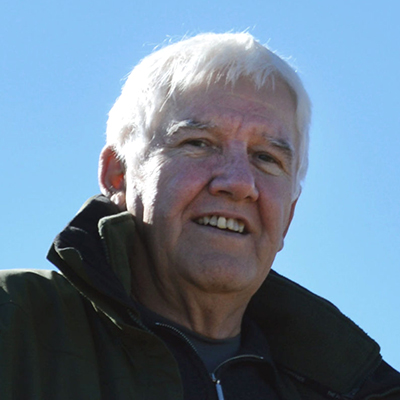By Arthur Woods
Science fiction author Arthur C. Clarke could not have stated it more clearly in 1968:
“The challenge of the great spaces between the worlds is a stupendous one, but if we fail to meet it, the story of our race will be drawing to a close. Humanity will have turned its back upon the still untrodden heights and will be descending again the long slope that stretches, across a thousand million years of time, down to the shores of the primeval sea.” [1]
Human activities on our planet have reached the point where we are now forced to seriously consider the viability of current civilization and the ultimate survival of the human species. In the first decades of the 21st century it has become acutely obvious that the impact of an expanding human population on a finite planet is resulting in situations that are simultaneously having major impacts on global issues such as the climate, the environment, energy sufficiency, food production, health, economics, geopolitics and on the freedoms of thought and movement. Indeed, even the near term sustainability of human society as we know it may now be in question unless immediate and effective corrective measures are taken. To address these issues humanity will implement either the “most innovative” or the “most repressive” solutions imaginable.
Without question, most people alive today instinctively assume that whatever humanity’s fate in the years ahead, that fate will be ultimately decided and enacted here on planet Earth and surely not anywhere else. As global problems appear to multiply exponentially, most world leaders also surely believe that: Earth problems must have Earth solutions.
Fortunately, space visionaries and pioneers such as Krafft Ehricke and Gerard K. O’Neill long ago recognized this dire eventuality and they and their followers have consequently developed both the scientific rationale and the technological capability to address the impending human dilemma.
In 1970 Krafft Ehricke wrote:
“While civilization is more than a high material living standard, it is nevertheless based on material abundance. It does not thrive on abject poverty nor in an atmosphere of resignation and hopelessness. It needs vigor as well as vision. Therefore the end objectives of solar system exploration are social objectives in the sense that they relate to, or are dictated by, present and future human needs.” [2]
In 1969 Gerard K. O’Neill, posed the following question:
“Is a planetary surface the right place for an expanding technological civilization?” [3]
This has led to a concept called the Space Option which is an evolutionary plan to meet the basic and anticipated needs of humanity through the utilization of near Earth resources – not only for the in-situ support of science or exploration – but rather to apply these resources and/or their products for use on Earth at a conspicuous level. Most immediately, the harnessing of inexhaustible amounts of clean energy from space would replace humanity’s dependence on the continued use of fossil fuels while insuring humanity’s future energy needs. This would also provide the basic means for restoring the environment, sustaining the world economy, reducing poverty and stimulating progress in the developing countries while preserving the living standards of the developed nations. Additionally, plentiful energy from space could also power desalination plants and contribute to solving the water crises and likewise produce hydrogen for future transportation scenarios. Whereas, none of the alternative terrestrial energy options – nuclear, wind and ground solar – can be sufficiently scaled to achieve the goal of divesting from fossil fuels while meeting the growing needs and demands of present and future populations. [4]
If implemented in time and with sufficient commitment, the ultimate reward would be a prosperous and dynamic planetary civilization living in a healthy environment as well as the creation of an infrastructure in space upon which the expansion of the human species throughout the solar system and beyond could be realistically anticipated. Of all the options currently available to our species at this critical moment in its history, the Space Option offers humanity the most optimistic path to its long-term sustainability and survival while meeting the challenge that Arthur C. Clarke so succinctly described above.
Arthur R. Woods
The Space Option was introduced by Marco C. Bernasconi & Arthur R. Woods in 1993 See: https://thespaceoption.com An earlier version of this article appeared in Leonardo Vol. 41, No. 4, 2008
Arthur C. Clarke (1968). The Promise of Space. Penguin Books, Harmondsworth, England.
Krafft A. Ehricke (1970). In-Depth Exploration of the Solar System and Its Utilization for the Benefit of Earth. Annals New York Academy of Sciences 187, 427-456.
Stewart Brand (1975). “Is the surface of a planet really the right place for an expanding technological civilization?” — Interviewing Gerard O´Neill. pp 22-30. In: Stewart Brand, Ed (1977). Space Colonies. A CoEvolution Book/ Whole Earth Catalog/ Penguin Books
Arthur R. Woods & Marco C. Bernasconi (2020). Space Energy Options for Addressing the Climate and Energy Emergencieshttps://thespaceoption.com/space-energy-options-for-addressing-the-climate-and-energy-emergencies/

Join our mailing list to be updated on future published articles.
Copyright © 2018-2019 2211. All Rights Reserved.